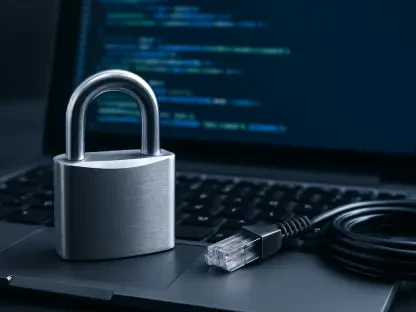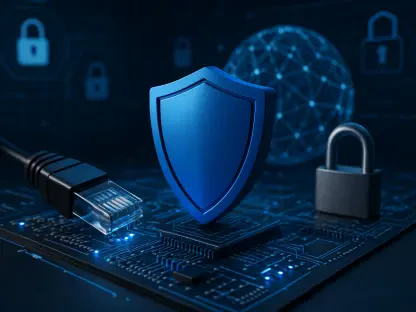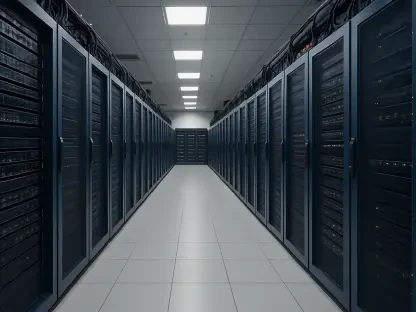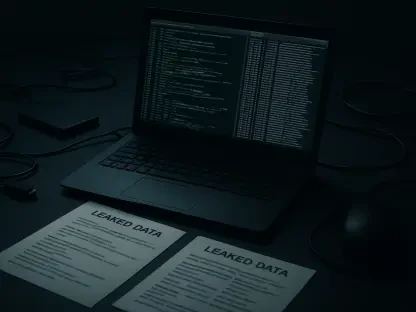In today’s digital age, cybersecurity plays an increasingly crucial role in safeguarding industrial systems from emerging threats. Our expert, Rupert Marais, is a noted authority on endpoint and device security. He sheds light on the current landscape and the steps companies like Siemens, Schneider Electric, and Aveva are taking to secure their infrastructures.
Can you explain the significance of Patch Tuesday for industrial solutions providers?
Patch Tuesday is significant because it signals a collaborative effort in the cybersecurity community to address and remediate vulnerabilities. For industrial solutions providers, this is crucial as it often involves aligning with global standards and addressing flaws that, if left unchecked, could lead to severe disruptions or even disasters in critical infrastructure.
What are some of the key vulnerabilities that Siemens addressed in their June 2025 Patch Tuesday advisories?
Siemens tackled several critical issues, one notable one being the CVE-2025-40585 vulnerability. This involved default credentials in Siemens Energy Services solutions, specifically affecting the Elspec G5 Digital Fault Recorder. Such vulnerabilities can grant unauthorized access, allowing attackers to gain control of the device and potentially alter its outputs, leading to misinformation or operational failures.
How does the CVE-2025-40585 vulnerability impact Siemens Energy Services solutions, and what mitigations has Siemens suggested?
The CVE-2025-40585 vulnerability primarily affects Siemens Energy Services solutions by posing a significant security risk due to its default admin credentials. This weakness can give attackers remote control, which is perilous. Siemens recommends promptly changing these default credentials to prevent unauthorized access and ensure secure device operation.
Siemens mentioned vulnerabilities affecting the Simatic S7-1500 CPUs. What steps are they taking to address these issues?
Siemens is actively working on updates that aim to resolve vulnerabilities found in the GNU/Linux subsystem of the Simatic S7-1500 CPUs. These updates are crucial because they address potential security gaps that could be exploited by malicious entities to compromise system integrity.
Could you elaborate on the medium-severity issues involving Siemens’ Sinec OS and the potential actions attackers can perform due to these flaws?
The medium-severity vulnerabilities within Sinec OS mainly concern privilege escalation. Attackers can exploit these flaws to perform actions beyond the limitations of a ‘guest’ account. This can lead to changes in system settings or accessing sensitive data, jeopardizing network security.
Who is Michael Heinzl, and how has he contributed to identifying vulnerabilities in Siemens products?
Michael Heinzl is a well-regarded researcher in the cybersecurity community. He has identified numerous vulnerabilities, particularly those that require users to open specifically crafted files. His work has been instrumental in helping Siemens recognize and address these vulnerabilities, demonstrating the importance of collaboration between researchers and companies.
How is Siemens addressing the XSS vulnerability in the Palo Alto Networks virtual firewall present in Ruggedcom devices?
Siemens is preparing patches to mitigate the XSS vulnerability affecting Ruggedcom devices. This proactive approach is vital to prevent attackers from exploiting these cross-site scripting flaws to execute harmful scripts within a browser, thereby potentially gaining unauthorized access or control over affected devices.
What security vulnerabilities did Schneider Electric address in their June 2025 Patch Tuesday advisories, particularly in the EVLink WallBox electric vehicle charging station?
Schneider Electric addressed significant vulnerabilities within the EVLink WallBox, such as arbitrary file access and XSS, which could allow remote control over the device. To counter these threats, the company has issued patches and advised on mitigations to secure their charging stations effectively.
How should customers manage products that have reached the end of life but still have vulnerabilities?
Managing end-of-life products involves implementing mitigations to minimize exploitation risks. Users should limit network exposure, employ firewalls and access controls, and stay informed about any third-party advisories that might provide alternative protective measures or updates.
Aveva released advisories about their products. Can you highlight the main concerns addressed?
Aveva’s advisories covered significant DoS vulnerabilities in the PI Data Archive, which could disrupt data management systems if exploited. Other advisories touched on medium-severity XSS flaws in the PI Connector for CygNet and PI Web API, focusing on maintaining data integrity and application security.
How do the CISA advisories relate to the broader context of industrial cybersecurity, particularly concerning SinoTrack GPS receivers?
The CISA advisories underscore the vulnerabilities within tracking technologies, notably the SinoTrack GPS receivers. These pitfalls allow attackers not only to track vehicles but also to manipulate fuel systems, raising concerns about cybersecurity in logistics and transportation, which are integral to industrial operations.
What actions did ABB take in anticipation of Patch Tuesday, and what specific vulnerabilities did they address?
ABB preemptively released advisories addressing significant flaws like the EIBPORT vulnerability that leads to information disclosure. They also tackled issues in third-party components, highlighting their commitment to securing communication and information exchange systems critical for industrial environments.
Can you summarize the key findings of Kaspersky’s ICS threat landscape report for Q1 2025?
Kaspersky’s Q1 2025 report highlights that threats targeted nearly 22% of ICS devices. It reveals an increase in the variety and sophistication of malware, pointing out that cybersecurity measures must evolve consistently to address these changing threats effectively, ensuring industrial systems remain fortified against burgeoning risks.
How does regular vulnerability reporting and patching contribute to overall cybersecurity in the industrial sector?
Regular vulnerability reporting and patching create a foundation of security resilience. They enable quick responses to potential threats, continually close security gaps, and maintain trust in industrial operations. This proactive stance on security helps prevent disruptions and ensures systems function seamlessly.
Do you have any advice for our readers?
Stay vigilant and informed. In the realm of industrial cybersecurity, adopting a proactive approach by regularly updating systems and adhering to the latest security advisories is essential. Engage in continuous learning and collaboration, as the threat landscape is ever-evolving, requiring constant attention and adaptation.









